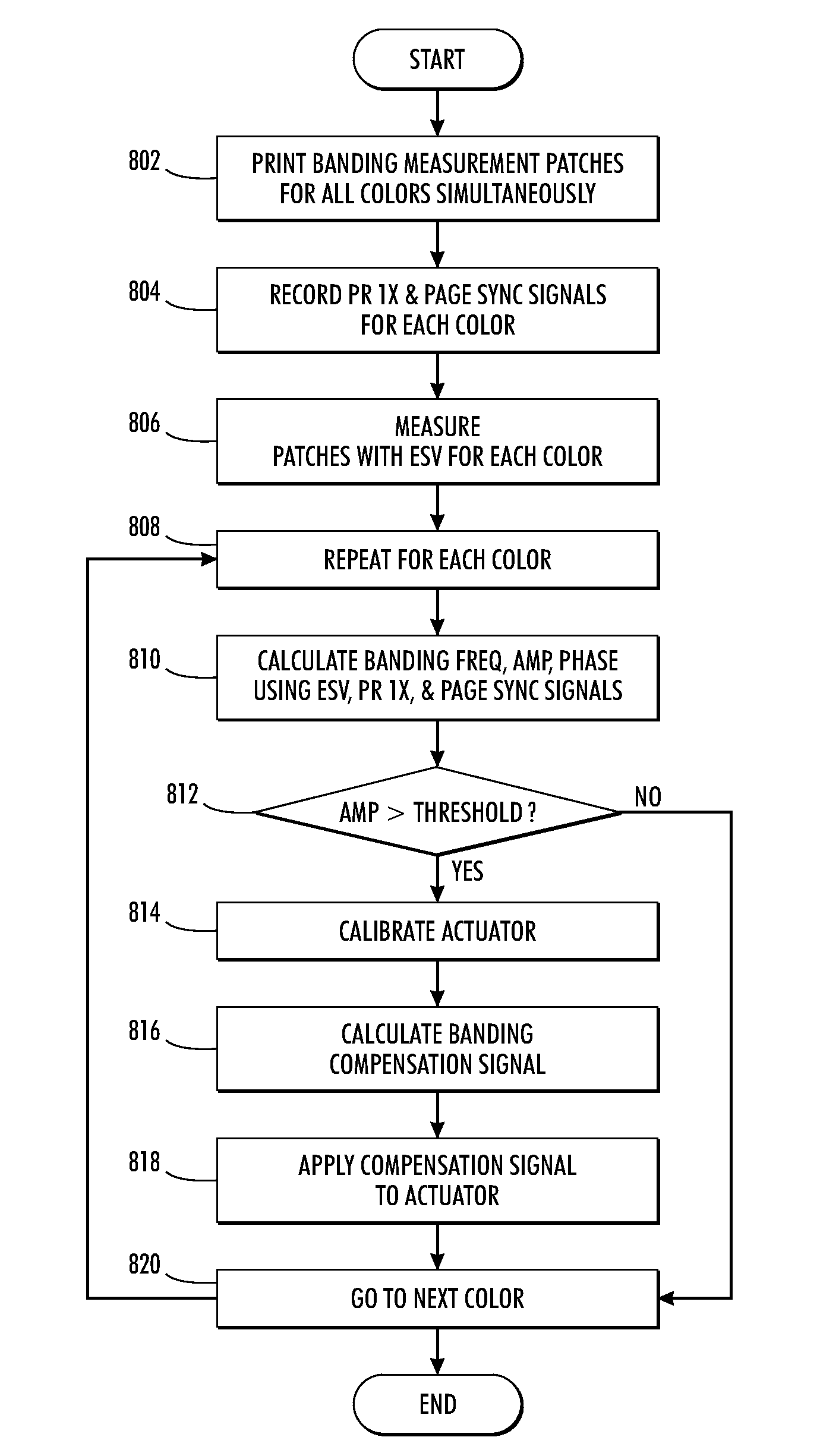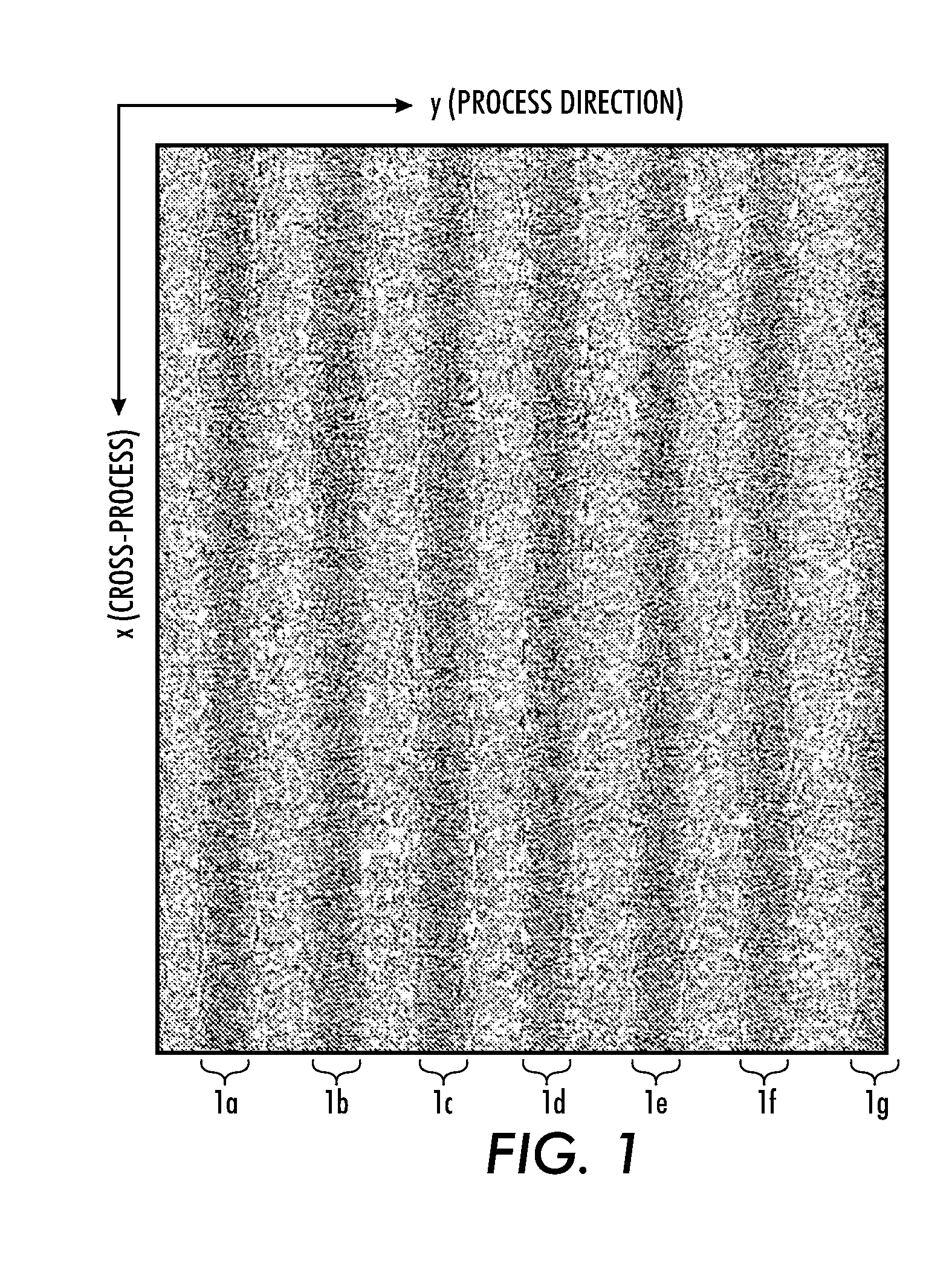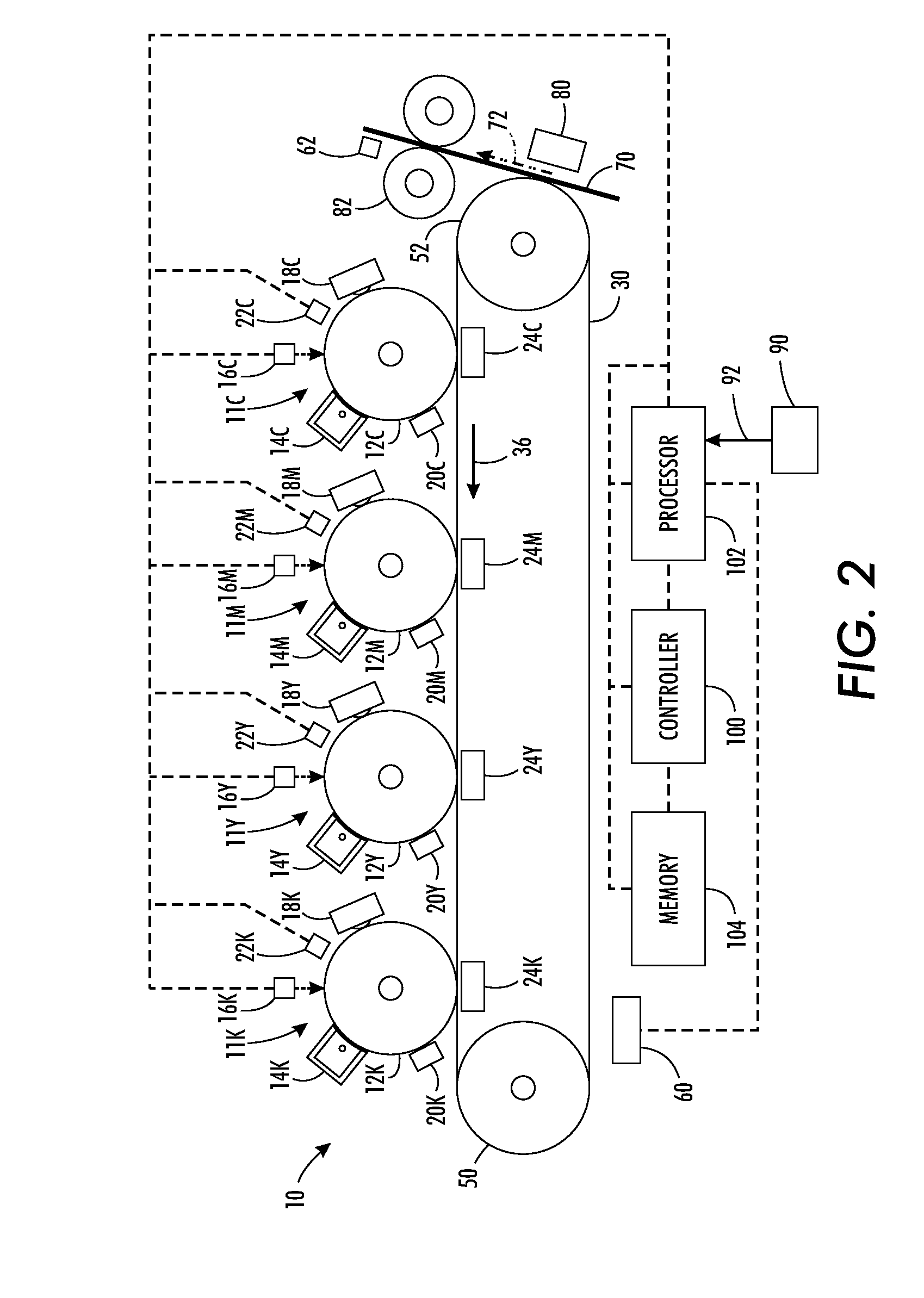Method and system for banding compensation using electrostatic voltmeter based sensing
a technology of electrostatic voltmeter and banding compensation, applied in the field of banding compensation using electrostatic voltmeter based sensing, can solve problems such as problems, reducing the signal-to-noise ratio (snr), and manifesting periodic non-uniformities in output prints
- Summary
- Abstract
- Description
- Claims
- Application Information
AI Technical Summary
Benefits of technology
Problems solved by technology
Method used
Image
Examples
Embodiment Construction
The present disclosure addresses an issue in the area of banding correction. The present disclosure proposes a use of Electrostatic Voltmeter (ESV) sensors to measure charge density variation, or voltage non-uniformity, on the image bearing surface to sense periodic image quality defects. Image quality defects, such as banding defects, may be caused by charge non-uniformity, variations in the Photo Induced Discharge Curve (PIDC), image bearing surface motion quality variations, and / or image bearing surface “out-of-round.” The present disclosure proposes compensating for the image quality defects by generating a compensation signal. In one embodiment, the compensation signal may modulate power of an exposing device, such as a Raster Output Scanner (ROS), during the expose process. In another embodiment, the compensation signal may modify image content. Such an embodiment may have a marking engine with an image bearing surface that is synchronous with the printed pages such that each ...
PUM
 Login to View More
Login to View More Abstract
Description
Claims
Application Information
 Login to View More
Login to View More - R&D
- Intellectual Property
- Life Sciences
- Materials
- Tech Scout
- Unparalleled Data Quality
- Higher Quality Content
- 60% Fewer Hallucinations
Browse by: Latest US Patents, China's latest patents, Technical Efficacy Thesaurus, Application Domain, Technology Topic, Popular Technical Reports.
© 2025 PatSnap. All rights reserved.Legal|Privacy policy|Modern Slavery Act Transparency Statement|Sitemap|About US| Contact US: help@patsnap.com



